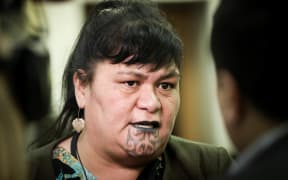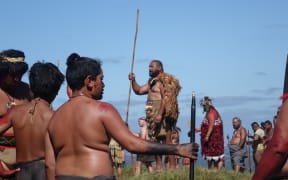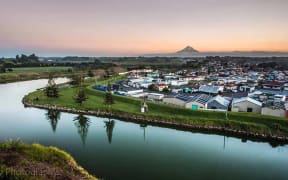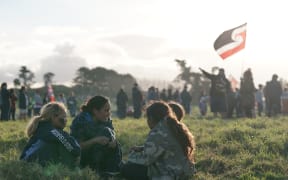Battle sites around Waitara and particularly Te Kōhia pā - where the first shots of the New Zealand land wars were fired - will be the focus of commemorations of the conflict in Taranaki next month.
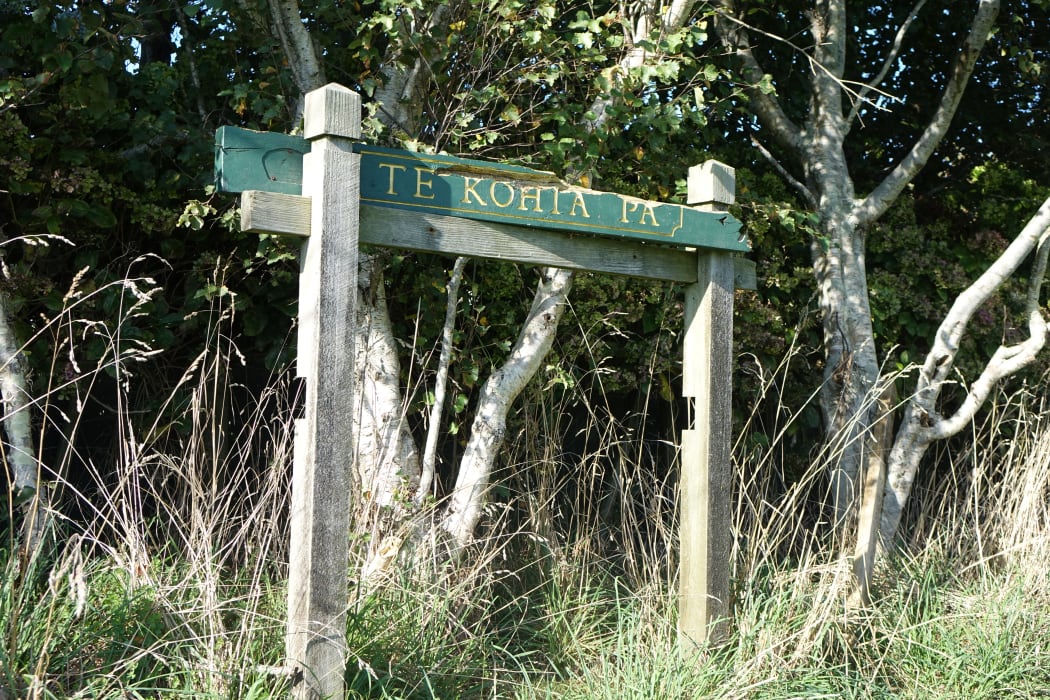
A tattered sign on an empty lot is the only acknowledgement that Te Kohia pā is where the first shots were fired in the Taranaki Wars. Photo: RNZ / Robin Martin
Te Pūtake o te Riri, He Rā Maumahara is a national initiative to commemorate the New Zealand land wars and events will be held around the country to raise awareness and understanding of the conflict.
Taranaki is this year's focus after the inaugural event was held in Northland in 2018.
Member of the working party coordinating the Taranaki commemorations, Dr Ruakere Hond, said that Te Pūtake o te Riri gave the community an opportunity to learn about this country's history - a history that not many New Zealanders know about.
"It's an honour and a privilege to be a part of this nationwide kaupapa and connecting with the national narrative to tell the story of our region's history within the wars, a history which often goes unrecognised. So we're glad to be hosting Te Pūtake o te Riri in Taranaki this year.
Dr Hond said it had been difficult to choose where to concentrate commemorations in Taranaki.
"The war in Taranaki started on 17 March in 1860 and lasted for about 21 years. There were battles and conflicts taking place across the entire region during that time - at Te Kōhia near Waitara, Puketakauere, Mahoetahi, Waireka, and also Turuturu-mōkai, Te Ngutu o te Manu and Tauranga-ika in south Taranaki just to name a few.
"Because of the length of time over the 21 years leading up to the 'Pāhua' - the sacking of Parihaka in November 1881 by Crown troops - it has been difficult to acknowledge the many battle sites across Taranaki over that period."
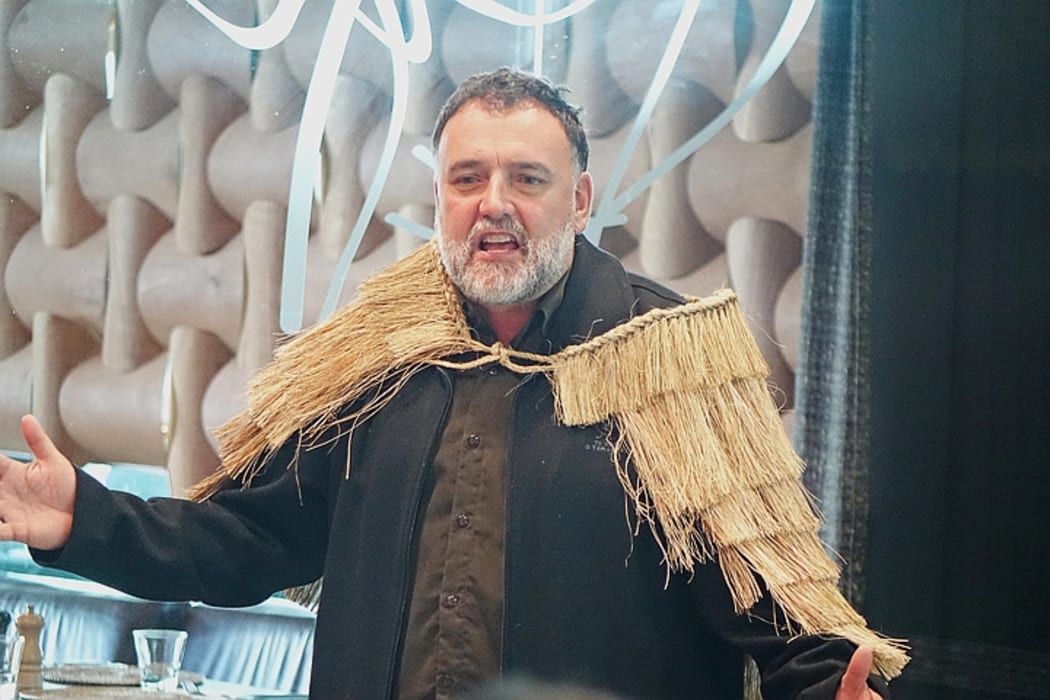
Dr Ruakere Hond Photo: RNZ/ Robin Martin
Dr Hond said although the battles around Waitara primarily affected Te Atiawa whenua other Taranaki tribes came in their support at the time and organisers wanted all iwi in the region to come together in support of Te Pūtake o te Riri's kaupapa.
The commemorations would look beyond the battles, he said.
"Although there were violent battles, there was also the passive resistance of Parihaka from 1878, which was in opposition to the government's enforcement of the confiscation of approximately 1.275 million acres of Taranaki land from Māori.
"The people of Parihaka hadn't become involved in the fighting, but they still had land confiscated. Out of all of the land confiscated from iwi across Taranaki only a small fraction of that confiscated land was ever returned."
Dr Hond said not a lot of people in Taranaki communities knew these stories and this history, and it was hoped Te Pūtake o te Riri could begin to change that.
Students from Otorohanga College were the inspiration for Te Pūtake o te Riri, He Rā Maumahara after they presented a petition to Parliament in 2015 calling for a national day to remember the 19th century land wars.
It was held for the first time last year at Waitangi and Kororāreka / Russell in Te Tai Tokerau / Northland.
Dr Hond said from a Taranaki perspective it was important to that commemorations also reflected non-violent resistance to colonial rule.
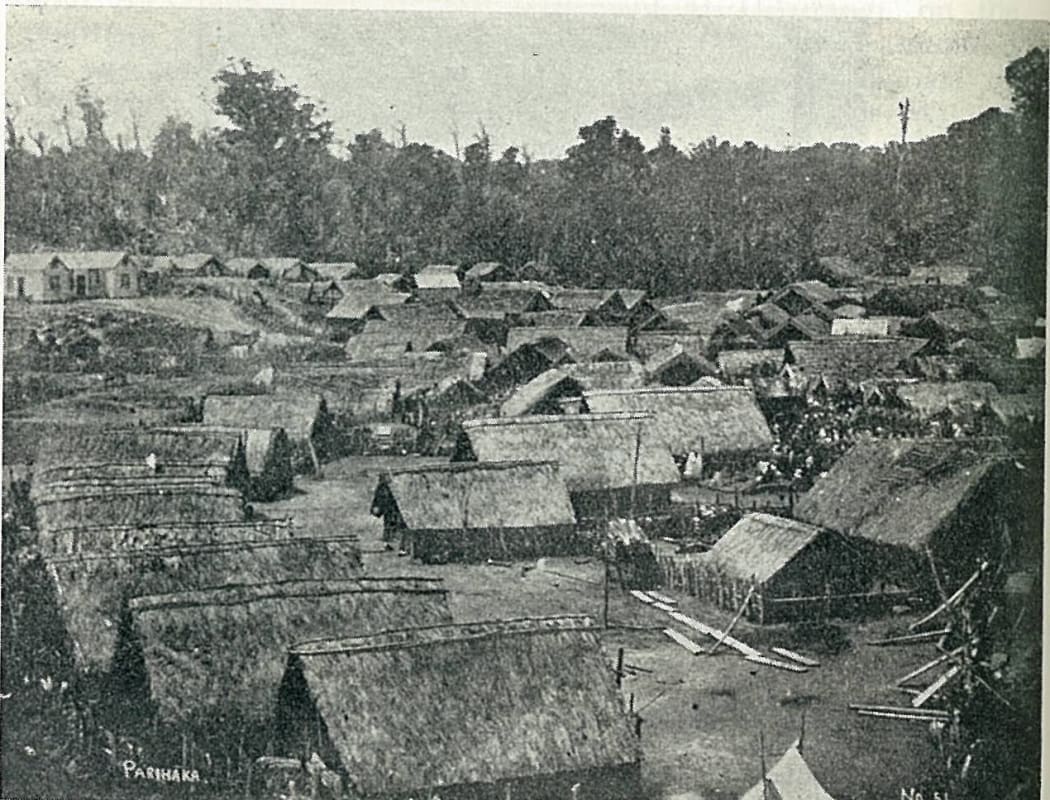
James Cowan took this photo of Parihaka, during the New Zealand wars. Photo: By James Cowan (The New Zealand Wars) [Public domain], via Wikimedia Commons
"Hoani Eriwata who hosts our local annual commemoration of the land wars, Riri me te Raukura, spoke with me about this day recognising our local history here in Taranaki - the story of peaceful and violent resistance.
"We then wrote a paper to present to the Crown sharing a Taranaki perspective of commemorating peaceful and violent resistance and that this should be a part of a national kaupapa of remembering the land wars."
The timing of Te Pūtake o te Riri, He Rā Maumahara this year recognises the signing of He Whakaputanga o te Rangatiratanga o Niu Tireni (the Declaration of Independence of the United Tribes of New Zealand) on 28 October 1835.
"We wanted to bring to the fore the 'why' behind the conflicts and focus on the resistance for sovereignty that was taking place at the time, which is why the date of the signing of He Whakaputanga Rangatira, a document signed before the Treaty of Waitangi asserting full Māori sovereignty, is being recognised," said Dr Hond.
"Te Pūtake o te Riri is really about raising our critical awareness, and for all of us to start talking constructively with each other about our shared history. This kaupapa is one opportunity of many for us to connect through our collective history and begin having those meaningful, open and honest conversations with one another so that we can move forward together."
Te Pūtake o te Riri, He Rā Maumahara
- Te Pūtake o te Riri, He Rā Maumahara is being held in Taranaki from Monday 28 October to Wednesday 30 October.
- Event will begin at Owae Marae where a pōwhiri will be held for visitors from across the country.
- The programme includes a series of wānanga or lessons about the land wars in Taranaki as well as visits to significant sites such as Te Kōhia Pā and Pukerangiora pā.
- A Te Pūtake o te Riri, He Rā Maumahara education programme has been created for Taranaki primary and secondary schools which will run alongside the main event.
- All Taranaki primary and secondary schools have been encouraged to participate.
- Te Pūtake o te Riri, He Rā Maumahara is a free event and open to the public.
For more information about Te Pūtake o te Riri, He Rā Maumahara taking place in Taranaki visit facebook.com/TePutakeOTeRiri.
Visit the website for more information about Te Pūtake o te Riri He Rā Maumahara initiative.
